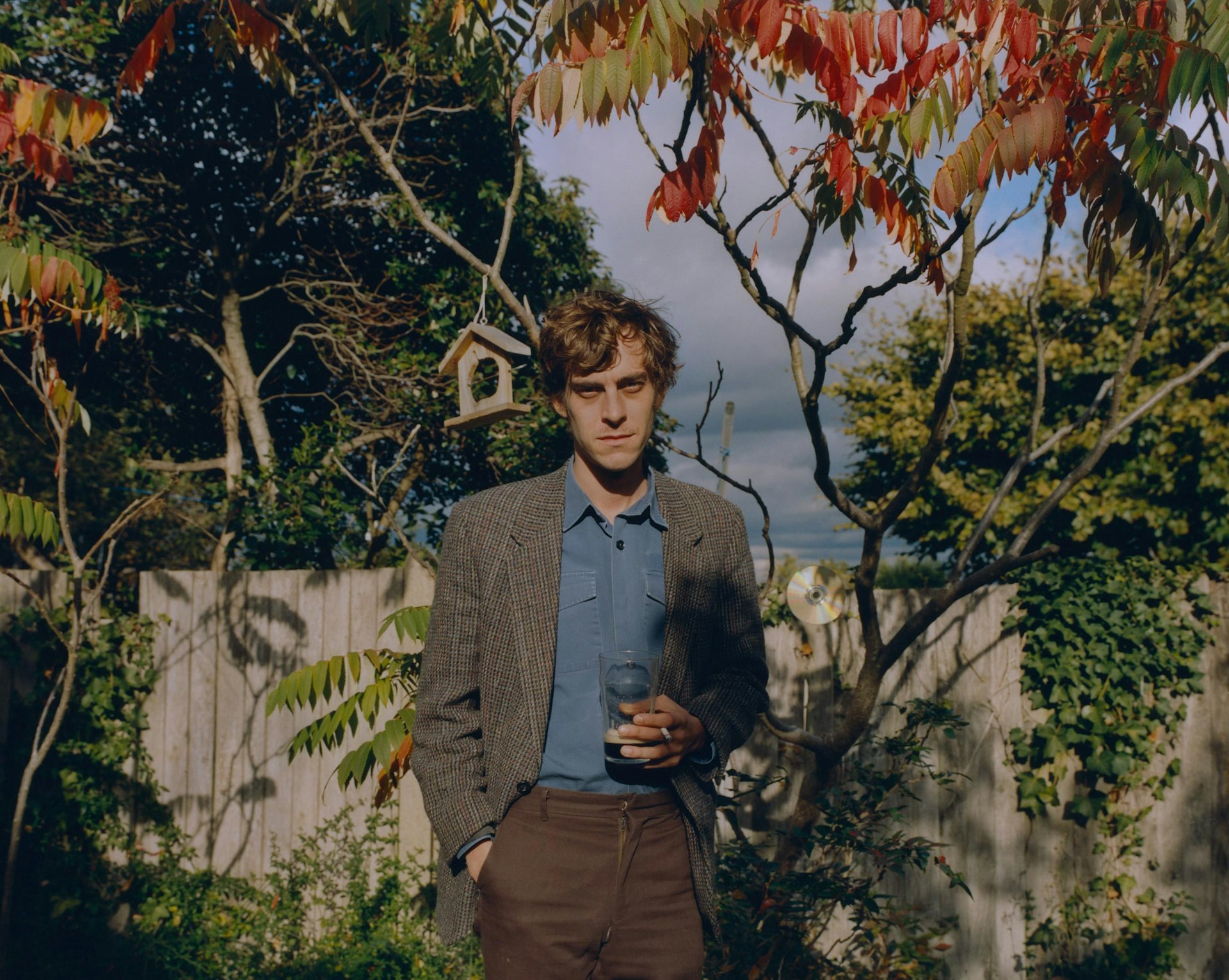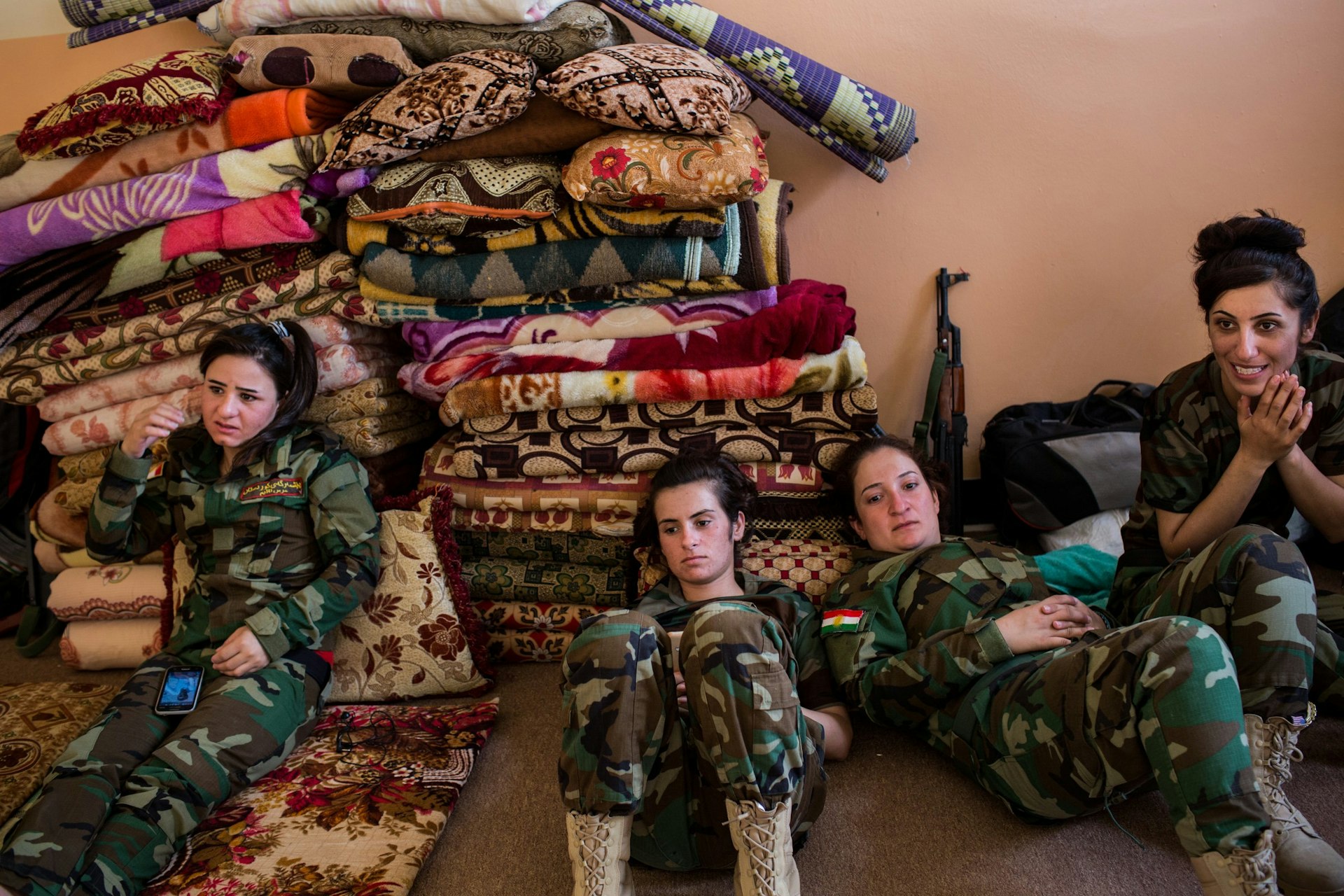
Shooting the frontline when you're not a middle class man
- Text by Eva Clifford
- Photography by Nicole Tung (main image)
It is April 1st, 2017 in Mosul, Iraq. Smoke rises from a recently fired mortar, and the atmosphere is eerily calm. Although far from the frontline, the area still carries risk.
Egyptian photojournalist Asmaa Waguih is in Mosul to cover operations by US-backed Iraqi forces clearing the city of ISIS fighters. She is accompanied by a group of other journalists and members of the Interior Ministry’s Emergency Response Division (ERD). As they prepare to leave the area, a mortar lands nearby. In the blast, Waguih is hit in the calf by shrapnel.
Escaping with just a minor injury, she does not let it deter her. Once her stitches are removed, Waguih returns to Mosul to continue her story – this time following Iraqi federal police helping families escape the area.
Waguih began her career as a freelance reporter, shooting photos to supplement her reporting. “I didn’t think I could take photography as a career at first, because I had never seen any female photojournalists in Egypt – especially in conflict areas,” she says.
“In the industry, male photographers are often used for assignments in hostile environments; that’s why I don’t rely on assignments. Normally, I set myself a goal to go to a place and work on my projects.”
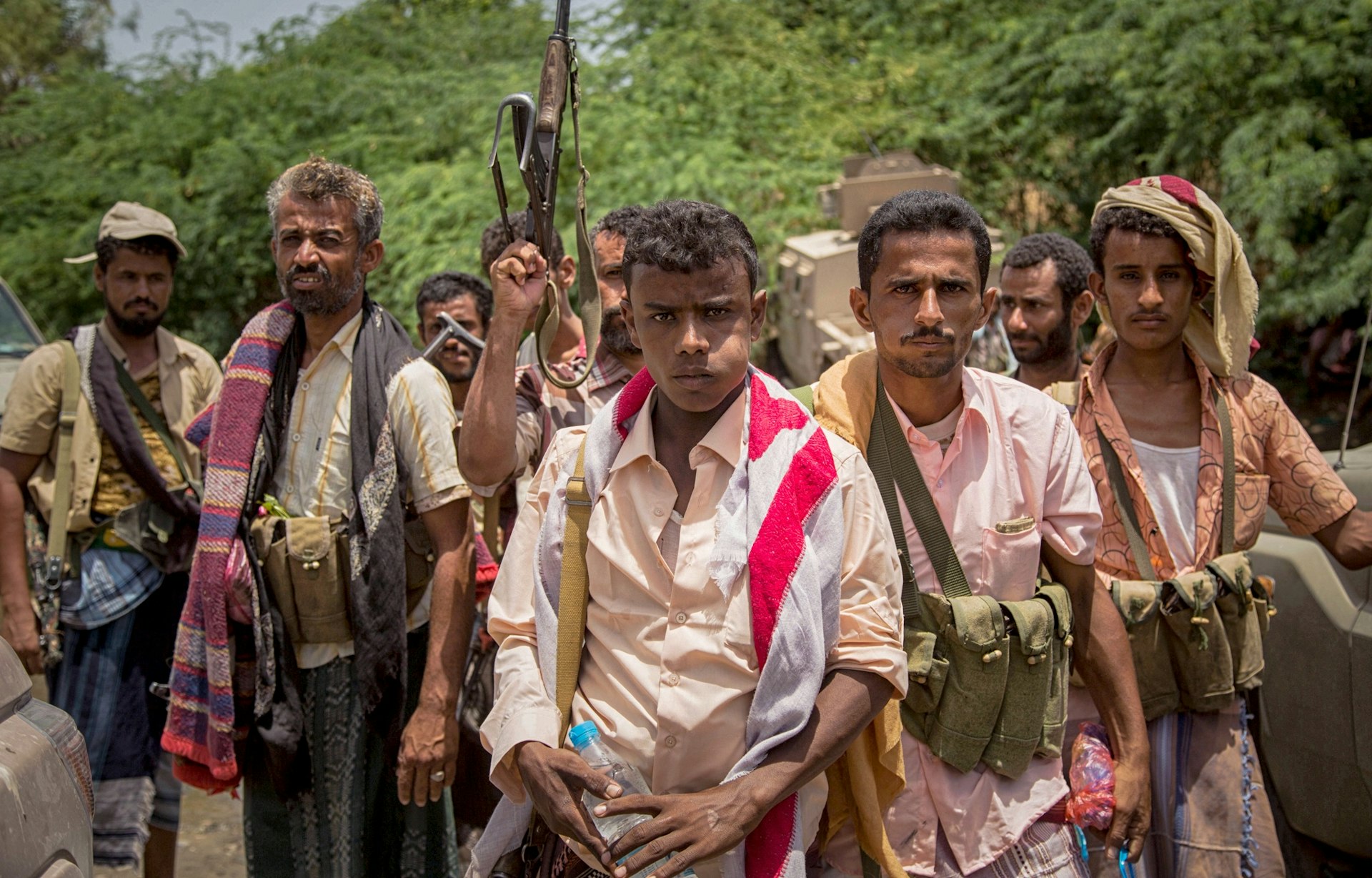
Members of the Saudi-backed Yemeni forces are seen as they advance in Al-Wazeya area in Taiz governorate against Houthis fighters, May 13, 2018. Photo Asmaa Waguih
Her reporting has taken her into the midst of war many times. During the eight years as a news photographer for Reuters News Agency, she was twice embedded with US marines in Afghanistan. Turning freelance in 2016, she photographed forces fighting the Islamic State in Iraq, Syria and Libya, and more recently, Waguih has been travelling to multiple cities in Yemen, capturing the two warring factions caught in the country’s ongoing civil war.
“The motivation behind my work is just like what motivates all journalists – to keep up with the stories they like to report on,” Waguih says. “My main interest is in the Arab countries with their political, religious and economic issues. I still write, especially when I’m in a place that is missing reporters like when I was in Hodaydah, Yemen, earlier this year. All media has its power, but I still prefer taking photos; the artistic shot, or one that expresses an important event, frozen in time.”
As an Arab woman, Waguih says she certainly feels she is treated differently in the industry. “People might think women are treated softer and get accepted more, but this has never happened to me, especially as a freelancer,” she explains. “In many cases, people want to hear the name of a big organisation to allow you into places easily, and being a woman sometimes makes it slower.”
“Female photographers are often expected to produce softer stories – and if they go to war zones, they should focus on women’s issues. Ultimately, I shoot pictures for what I want to show regardless of what would be better to sell.”
*
“I recognised when I was a child that my life would be easier if I was a boy, not a girl,” says Anastasia Taylor-Lind.
The British photojournalist was 16 when she picked up a book on the Vietnam War by photographer Don McCullin – a moment she describes as her first real revelation. “I hadn’t seen photographs of war before,” she recalls. “The second revelation was that there was someone whose job it was to photograph it.”
Taylor-Lind (now aged 37) went on to study documentary photography at Newport University in Wales. Since then, she has lived and worked in places such as Syria, Lebanon and Ukraine. For the past four years, Taylor-Lind has been making work around the revolution and subsequent war in the east of Ukraine, seeking to challenge the stereotypes of war reporting.
“Conflicts are represented by epic scenes of destruction and military action, and this is obviously very visual,” she says. “But actually, for the civilians – the people who are most greatly affected by all wars – often it doesn’t look quite so dramatic, or cinematic.”
Her project Maidan: Portraits From the Black Square was made during the 2014 Ukrainian uprising in Kiev. As protesters made their way to the frontline barricade at Kiev’s Independence Square (known as Maidan), Taylor-Lind captured analogue portraits of these passers-by in her makeshift portrait studio. Pictured against a simple black curtain, the fighters are shown in their improvised body armour; a curtain that, she says, “obscured the highly seductive and visual backdrop of fire, ice and smoke.”
“I felt I needed to remove the dramatic visuals that had become so familiar and repetitive within the mainstream media,” she explained in a TED Talk about the work.
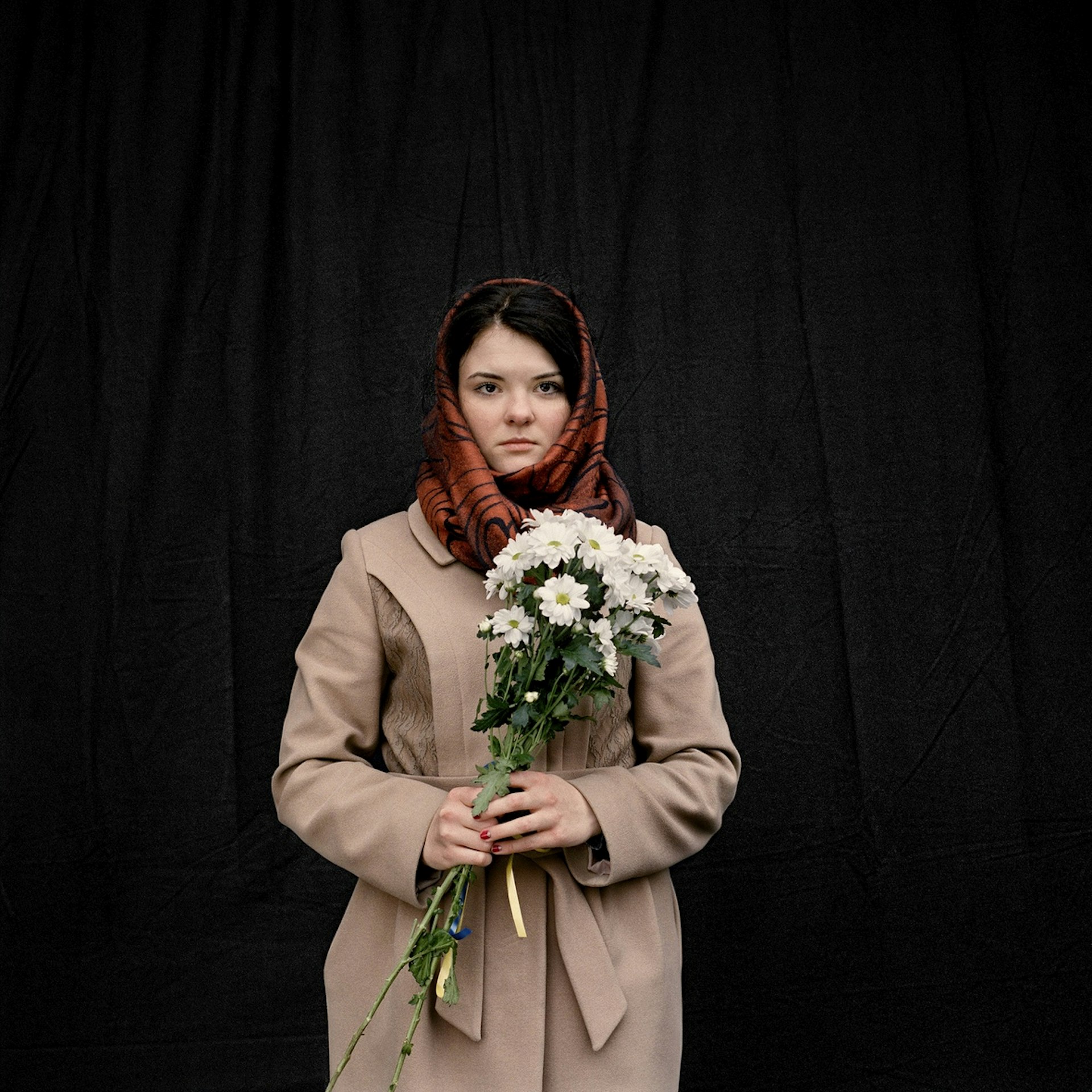
Natasha
Kiev, Ukraine, February 2014. From the series MAIDAN – Portraits from the Black Square. Photo Anastasia Taylor-Lind
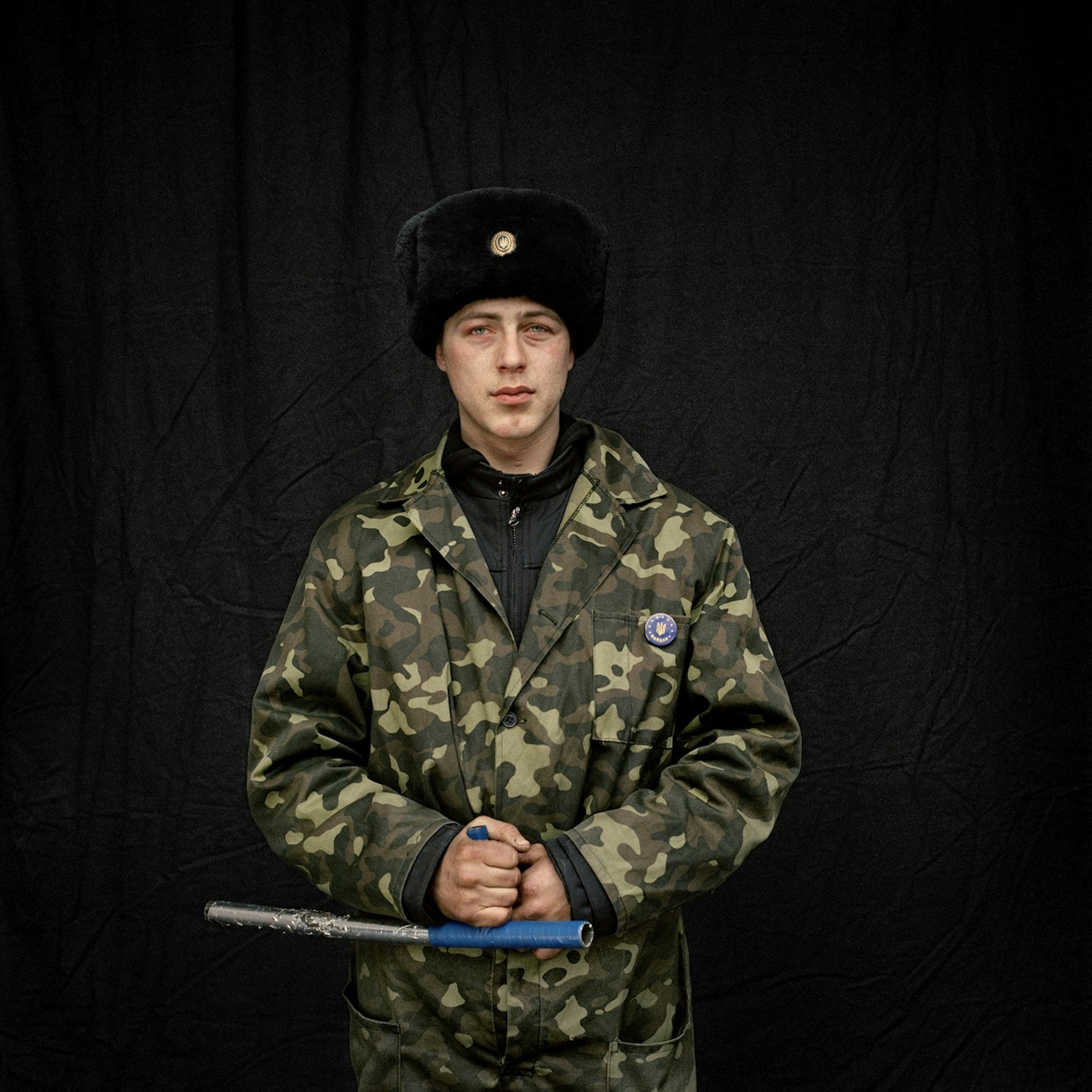
Serhiy Kiev, Ukraine, February 2014. From the series MAIDAN – Portraits from the Black Square. Photo Anastasia Taylor-Lind
In terms of safety in the field, Taylor-Lind says she mitigates risk in the same way she does in her personal life. “I have to consider my gender unconsciously in everything that I do,” she explains over the phone from her home in London. “I make the same choices that all women have to make in order to keep themselves safe.”
Vulnerability to sexual assault is, of course, a major concern, but as Taylor-Lind points out, this is a problem that is not unique to working in hostile environments. It is, unfortunately, prevalent everywhere and across all industries.
Taylor-Lind was among those who spoke out to the journalist Kristen Chick about the harassment and assault that women face from members within the industry itself. In the article – which was published on the Columbia Journalism Review in the summer of 2018 – Taylor-Lind details how the lauded photojournalist and founding member of VII photo agency, Antonin Kratochvil “slid his hand between her buttocks” and “pushed it forward until he was touching her vagina over her clothing” at an agency annual general meeting in Paris. “[Vulnerability to assault] is not just out in the field,” clarifies Taylor-Lind. “It’s also when I’m engaging with the photojournalism community.”
“There is obviously a huge gender imbalance in the industry,” she continues. “And inequality in terms of race and socioeconomic background. There’s very little representation from the LGBTQI community and from people with disabilities. This is a profession that is dominated, as it always has been, by white, middle-aged, middle-class, heterosexual men from the world’s richest countries.”
“How can photojournalism even consider itself to be relevant if you have one half of the world – the privileged half of the world – representing the other half?”
*
Unlike western journalists, Fati Abubakar is a photographer who does not have the luxury of leaving the scenes she photographs behind.
Abubakar was in her 20s when Boko Haram – the notorious Islamist insurgent group – started to seize her hometown of Maiduguri, in northeastern Nigeria. “Life in Borno, we take it day by day,” she tells me. “One minute it’s perfectly normal, the next minute the whole town is shut down because the military is fighting the insurgents in a nearby village, or there is news of multiple suicide bombers coming to town. You never know what will happen.”
With her camera, Abubakar captures daily life in Borno State, scenes that are often overlooked by the mainstream media in favour of more sensationalist stories, which focus predominantly on the suicide bombings and kidnappings carried out by Boko Haram. From her civilian perspective, she posts photos on her Instagram feed ‘@BitsOfBorno’ to show people what life is like living alongside the insurgency.
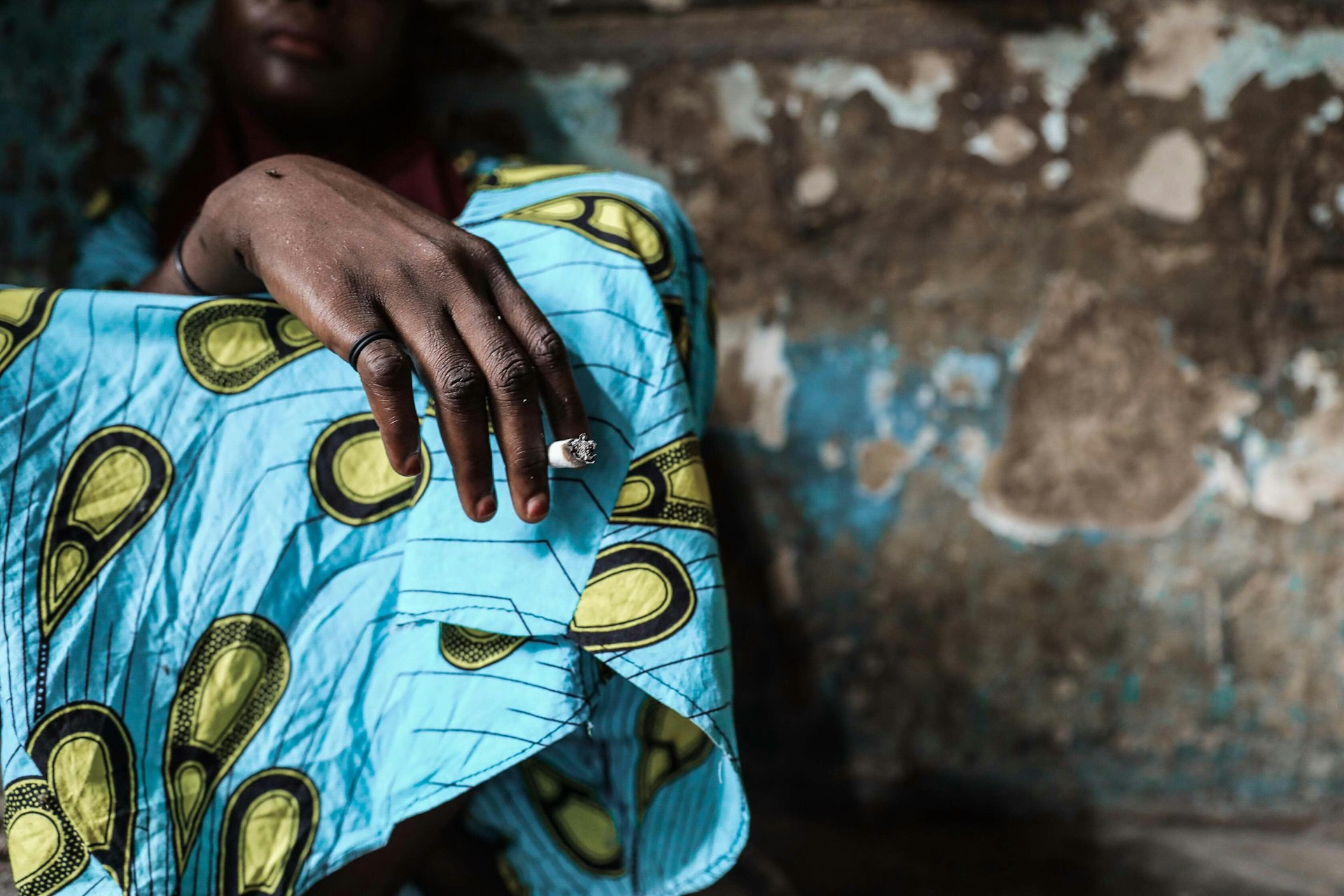
A woman smokes at a hidden location in Maiduguri where women and men meet smoke weed and to take illicit drugs. Photo Fati Abubakar
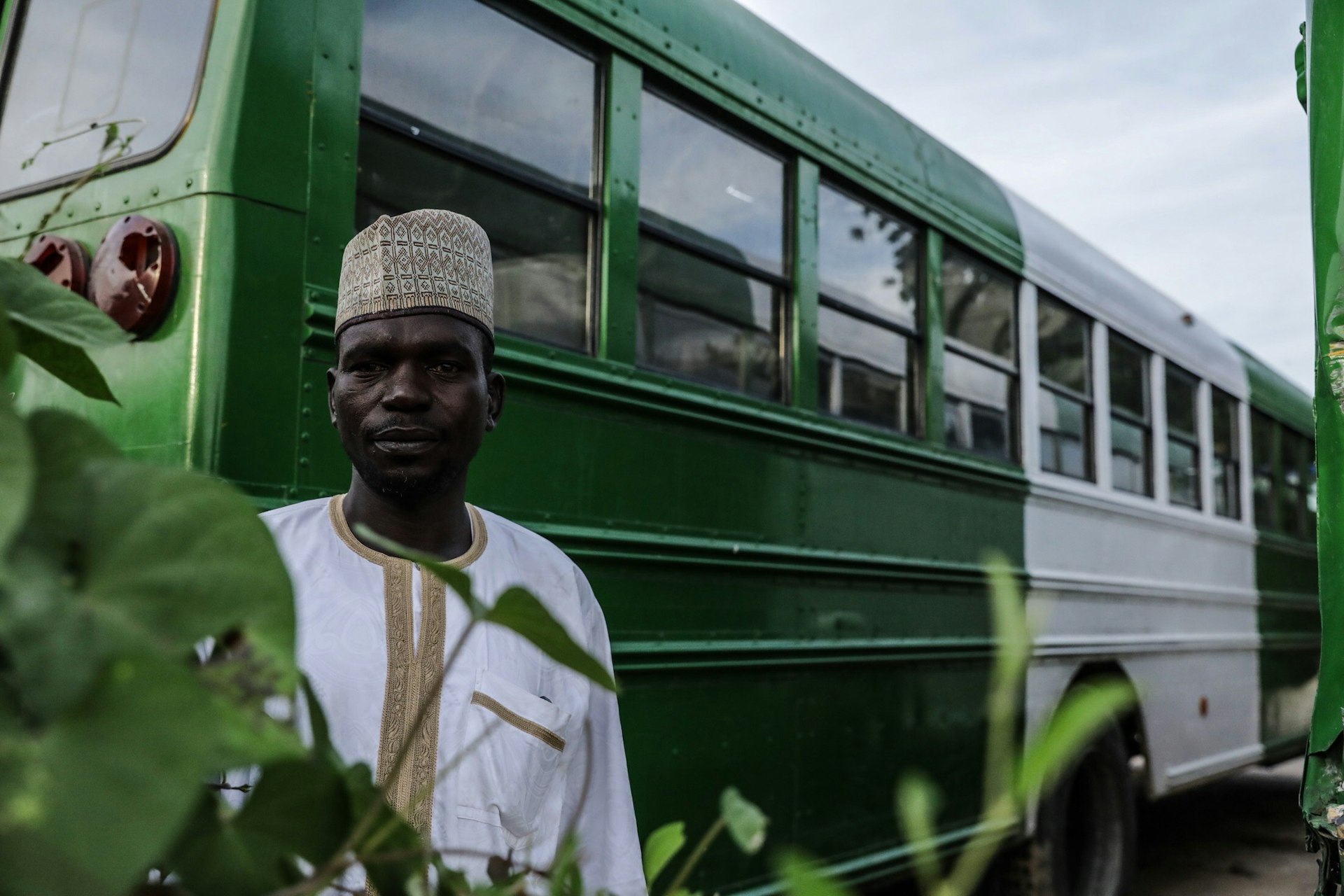
‘A driver of the state owned buses that rescue villagers from rural areas attacked by Bokoharam from the Bits of Borno series on Unsung heroes’. Photo Fati Abubakar
“Culturally, our community is very conservative,” she says, “so as a female photographing in the streets, it’s not considered a profession. If you are a Kanuri woman you are expected to be married. Sometimes you can sense the disapproval; I ignore it.”
“Also, people in my community feel a Muslim girl shouldn’t be as free-spirited and as adventurous as I am,” she adds. “And of course, there is always the fear of being a target, because Boko Haram (literally: ‘education is forbidden’) is against women being educated and independent.”
Once, while she was shooting, she was surrounded by a crowd demanding answers as to why she was photographing street children under a bridge in Maiduguri. But after she explained, she says the situation calmed down. Abubakar has also had her camera seized twice by the military. She says: “It’s always tricky because there is a heavy military presence in the town, and the day depends on who you meet in the street.”
While she believes that caution is key, Abubakar says that, at the same time, she does not want to live in fear or paranoia. Mostly, she relies on social media to inform her about what’s going on around town. Avoiding risky areas, she focuses instead on what goes on behind the scenes – the vendors and everyday people going about their lives. “Other days we wait for the violence to abate, and then visit later that day or the next day to hear the stories,” she says.
“A lot has changed since I started my project,” reflects Abubakar. “The number of attacks has reduced, but they have not stopped completely. There are still killings and abductions in smaller villages, and the trauma in the town is still unaddressed and overwhelming. It is gut-wrenching covering these stories and some people may never heal.”
*
“I think people would be lying if they were doing this work and said they weren’t attracted to some risk,” says Nicole Tung, who has been covering conflicts around the world for seven years. “But there is a fine line in knowing the difference between being addicted to it versus knowing why you’re there.”
Born and raised in Hong Kong, Tung has worked in places such as Libya, Egypt, Syria, Lebanon, Iraq, Turkey and DR Congo.
“I’ve been very careful about the risks I’ve been willing to take,” she says. “Knowing how many people have been injured or killed in this line of work, including friends, has certainly given me pause and made me more thoughtful about why I need to do certain things and go to certain places.”
“Even in this time, I feel we’re not always given the same opportunities as men, especially when reporting from conflict zones. Whether that’s because we’re seen as less physically capable or more vulnerable to sexual assault, those are still ‘barriers’ that others place on us when they need to decide who to send to cover a story.”
Tung adds that female photojournalists working in the Middle East also face the sexism of the countries they work in, which are often very patriarchal. However, she sees being a woman is sometimes an advantage as it allows her to traverse both male and female worlds in a deeply segregated society.
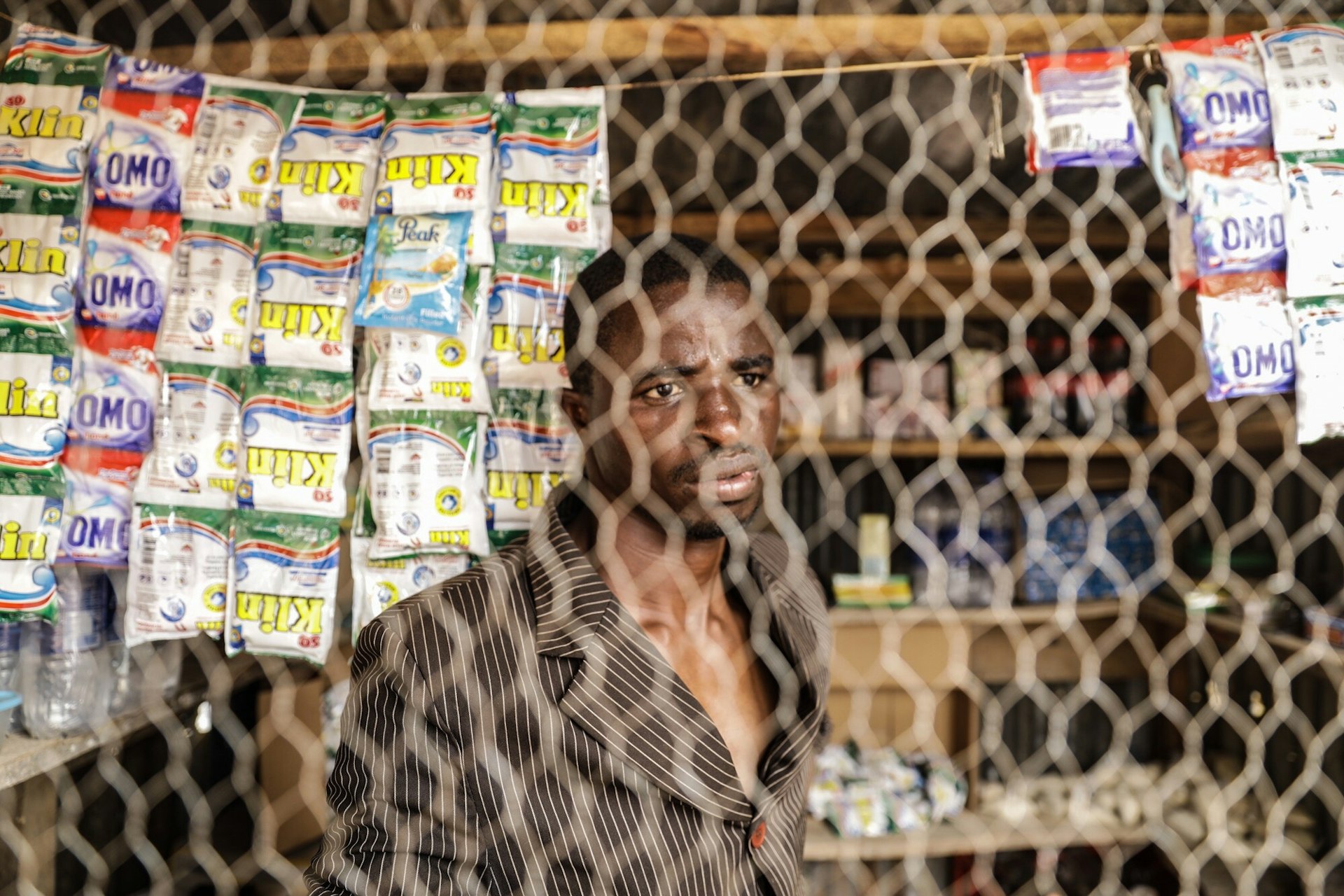
A driver of the state-owned buses that rescue villagers from rural areas attacked by Bokoharam from the Bits of Borno series on Unsung heroes. Photo Fati Abubakar
As a freelancer, Tung does not get institutional backing for security. Essential pieces of kit including safety gear, as well as insurance are all mostly done by herself and out of pocket. “It is an expensive profession to be in,” she admits. “And often people don’t understand why we need to pay for the news because they don’t see that all of this is factored in there.”
Of course, it is not only physical danger that journalists face. The effects of war also bear psychological scars. “Everyone deals with trauma differently,” says Tung. “For me, I take my time with it when I get back from a particularly difficult assignment. I talk to friends, do things outdoors, and take a bit of ‘decompression time.’”
“There are more freelancers now than ever before and whether we work in war zones or not, we still need safety nets from the publications we work with and to be paid for our work. I’d say that’s probably the biggest challenge right now.”
*
Throughout history, we have had some of the most significant events recounted to us by a predominantly white male perspective, especially in the field of war photography.
Susan Sontag once said: “Photography, first of all, is a way of seeing.” When Taylor-Lind picked up McCullin’s book, it was only later that she realised she was seeing the war as he saw it. All voices should matter. And it’s important that stories are told from multiple perspectives because photojournalism ultimately becomes part of our collective history. If we have more diversity, more representation within the industry, these stories will become richer as a result.
While war zones are dangerous places for anyone, journalists are facing a greater risk than before, increasingly becoming targets themselves. According to the Committee to Protect Journalists (CPJ), 44 journalists have been killed this year so far. But what drives them is often a firm belief that telling these stories will contribute to a greater understanding of our world.
“It is our duty as journalists to keep the public engaged with conflicts and crises around the world,” explains Tung. “The way to keep people engaged is to remind our audiences of our commonalities; by humanising the stories we amplify.”
“I keep doing what I do because I believe in it. And I believe in truth.”
Main image caption: Soldiers with the Yazidi ‘Sun Ladies’ battalion relax during downtime at their base near Sinjar, in Kurdistan, Iraq, on Tuesday, August 30, 2016. The ‘Sun Ladies’ as they are known, is made up of several hundred Yazidi women, some who were formerly enslaved by ISIS, are attempting to fight back against the extremist group with the help of the Kurdish Peshmerga through training, funds, and arms. Ms Khider was a renowned Yazidi singer before ISIS attacked the Yazidi population in northern Iraq. Photo Nicole Tung.
Enjoyed this article? Like Huck on Facebook or follow us on Twitter.
